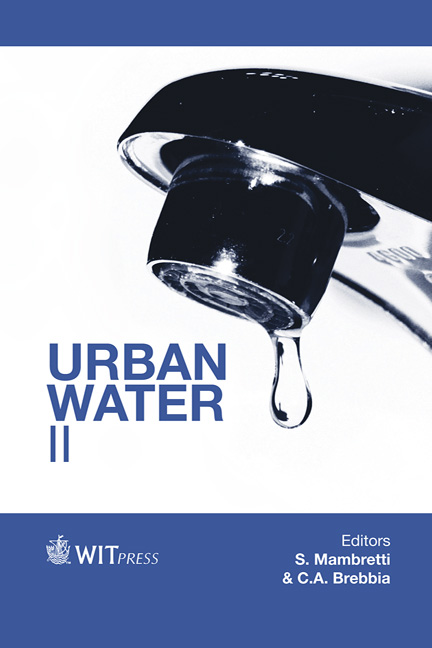Managing Water Infrastructure: Corrosion Models For Cast Iron Trunk Mains
Price
Free (open access)
Transaction
Volume
139
Pages
9
Published
2014
Size
384 kb
Paper DOI
10.2495/UW140341
Copyright
WIT Press
Author(s)
A. Fahimi, D. A. Jesson, M. J. Mulheron, P. A. Smith, T. S. Evans, N. Clay-Michael & J. Farrow
Abstract
Distribution networks are critical in providing continuous potable water supplies to households and businesses. Trunk mains are the major arteries of the distribution network and convey large volumes of water over long distances. Worldwide, much of this infrastructure is made of ageing cast iron and is deteriorating at different rates. Many of these mains are beginning to approach the end of their service lives (with some already exceeding their design life) and consequently out of large populations of pipes, some are failing, although some still have considerable residual life. Trunk main failures can have significant social, health and safety, environmental and economic impacts. It is therefore imperative to prevent the wide-scale failure of trunk mains through the implementation of proactive asset management strategies. Such approaches require accurate condition assessment data across the network in conjunction with deterioration modelling to predict how the assets’ condition and performance changes over time. This work, being part of a wider collaborative project, has outlined a deterioration modelling framework on the basis of existing physical probabilistic failure models and research focussing on residual mechanical properties, corrosion and the NDT detection of flaws. The developed deterioration model can be used to characterise individual pipes (deterministic approach), as well as the cohort/network modelling of pipes (probabilistic approach). Deterioration is assumed to be predominantly based on corrosion. Previously this has been dealt with in a rather simplistic manner. The broader work has, on the one hand,
Keywords





